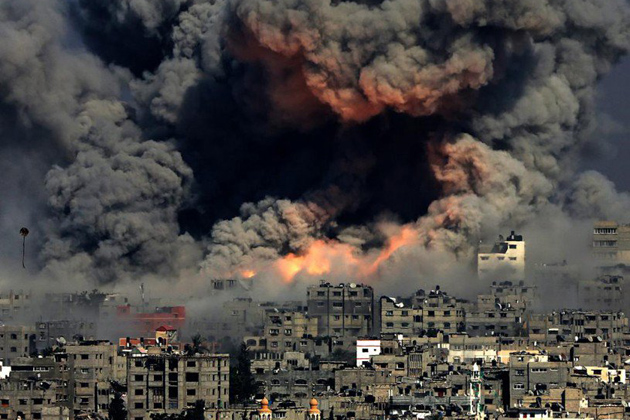Ever since renewed fighting began between Israel and Hamas, Jeremy Pressman, director of Middle East studies and an associate professor of political science at the University of Connecticut, has been writing about the conflict and offering his insight to multiple media outlets. Here, he answers two of the overarching questions about the current conflict for UConn Today.
Q: Why are the Government of Israel and Hamas still fighting?
The war has dragged on because both sides are seeking different gains from the fighting. Neither political leaders are hurting enough yet to make the concessions that it would take to end the war (in contrast with civilians, where the situation is bad for many Israelis and very bad for Palestinians in Gaza). Hamas wants at least some of the following: the easing of the border closure that greatly limits Gaza exports and imports; the opening of the crossing from Gaza into Egypt at Rafah; the release of Hamas members (re)arrested by Israel in June 2014; and the payment of tens of thousands of unpaid government workers in Gaza.
The Government of Israel sees all those steps as rewards for Hamas aggression and wants a ceasefire that stops Hamas rockets and tunneling into Israel. At times, Israel has also talked about the demilitarization of the Gaza Strip.
A further challenge is that the Government of Egypt is more anti-Hamas than it has ever been because Hamas is part of the same movement as the Egyptian government’s nemesis, the Muslim Brotherhood. Given Egypt’s geographic position and relations with Palestinians and Israelis, Egypt has always been a key mediator. Cairo appears to be in no hurry to stop the fighting this time.
One way out might be a “humanitarian” ceasefire while the parties continue to negotiate the harder issues. But that approach failed Friday morning when Hamas apparently killed and captured Israeli soldiers after a humanitarian ceasefire had started.
Q: If the Government of Israel and Hamas do agree to a ceasefire, how can they avoid another round of fighting in the coming years?
There are only four options that I can see. If they return to how things were, another round of fighting and massive, mostly Palestinian, casualties are likely. They fought in 2006, 2008-09, 2012, and now 2014.
A second option would be for Israel to destroy Hamas. It would be very difficult if possible: Hamas could reconstitute itself and re-arm; and if Hamas truly collapses, the next leaders of Gaza could be more extreme. It would probably require Israel to police Gaza with boots on the ground, something that has not gone well in the past, whether in Gaza or elsewhere.
A third possibility is developing a real move toward an independent Palestinian state in the West Bank alongside Israel. If that worked, Palestinians in Gaza eventually might turn away from Hamas. As of now, many Palestinians look at 20-plus years of negotiations with Israel, and often the United States, and see no beneficial results. To many, that leaves only the path of violence. One problem is that U.S. Secretary of State John Kerry just tried this approach and, after months of effort, came up empty this past April. To an Israeli right already skeptical of a two-state solution, the current war will only deepen opposition to the idea.
A final possibility would be improving life in Gaza by easing the Israeli-Egyptian blockade. One idea is to have the Palestinian Authority, under the direction of Palestinian President Mahmoud Abbas, take control of Palestinian life in Gaza. Egypt seems interested at least in having Palestinian Authority forces at Rafah. Hamas and Fatah, Abbas’s party, had signed a reconciliation agreement in April and formed a new unity government in June. Israel strongly opposed that reconciliation agreement, but perhaps some officials would reconsider, given all that has transpired since.
A final thought: given the ongoing fighting, take everything here with a grain of salt.



